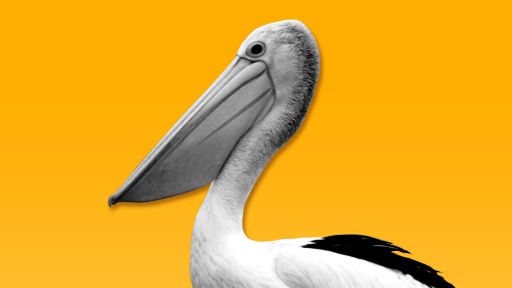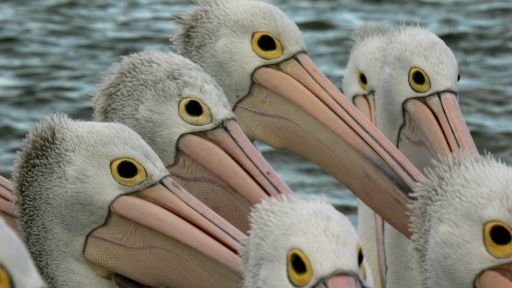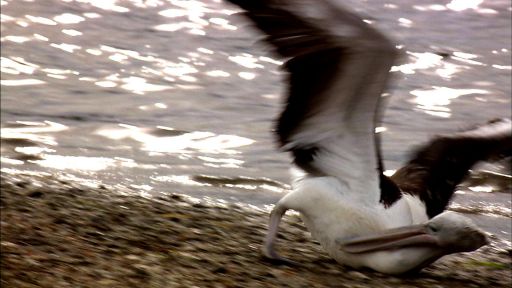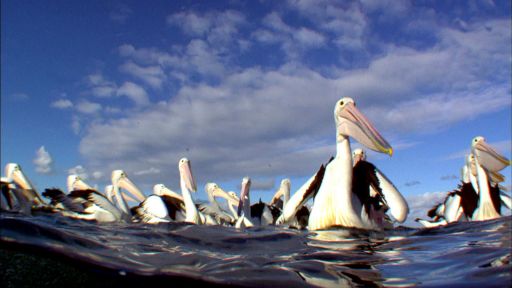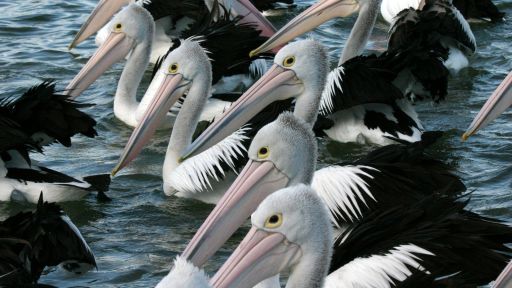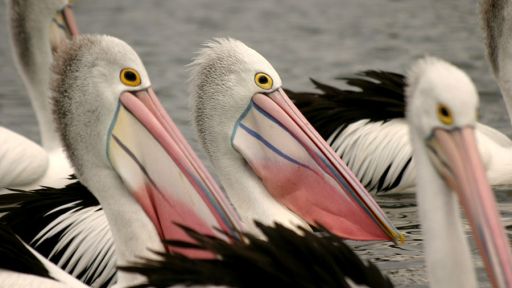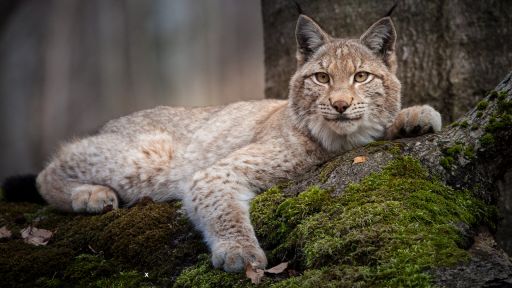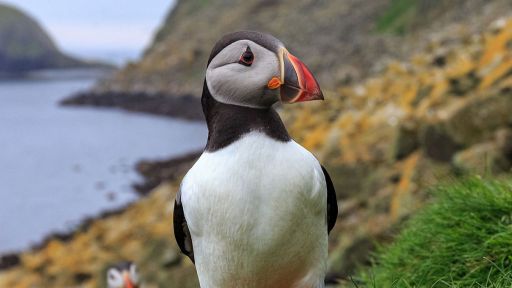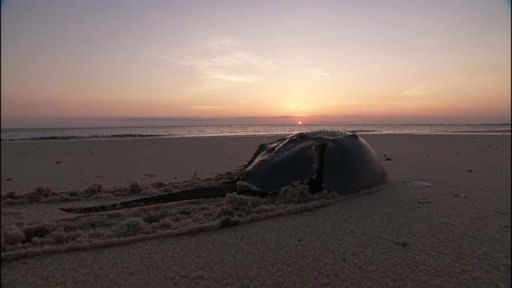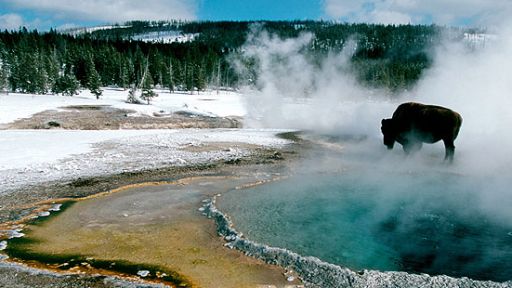The Australian pelican is built for long-distance travel. One of the largest pelicans in the pelican family, with a light skeleton and a wingspan of over eight feet, it can be airborne all day and deep into the night, riding far and high on rising thermals. When rare weather systems bring heavy rains, huge numbers of Australian pelicans abandon the sea and coastal waters and embark on a mass pilgrimage to a place a thousand miles inland. It’s the last place you would look for one of their kind – the Australian Outback, one of the driest, hottest places on the planet.
They are heading for Lake Eyre, an empty, salt-crusted lake bed that covers an area the size of Texas, Oklahoma and New Mexico, combined. It lies 50 feet below sea level, making it the lowest point in Australia, a vast drainage basin in the heart of desert. The floods from the rains are headed here, too, filling dry riverbeds with water which will transform this desolate place into pelican heaven. With the water comes a host of new life that offers a feast to the birds – fish and frogs, crustaceans and shrimp. The pelicans settle in at Lake Eyre for as long as the water lasts, to court and breed and raise a new generation in this unlikely sanctuary.
But what exactly triggers their journey? How do they find their way? How do they know what is waiting for them? And where do they go when they leave? NATURE looks for answers to questions researchers are only now beginning to unravel.

